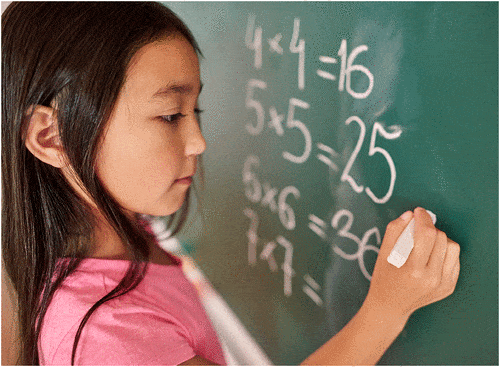Building Fact Fluency in Mathematics
Fact fluency continues to be a struggle in schools and classrooms. Part of the issue is not knowing the 'why' behind fact fluency, followed by not knowing the 'what' or 'how.' In my post on Starting with Why we dug into the importance of having clarity of the goal and communicating the purpose of what it is that we're doing. Through that lens, I'm going to take you through a brief Why, What and How of Fact Fluency.
What?
Fact fluency is NOT just the automatic recall of math facts, and this common misconception can effect the why and the how. If we are going off of a decades old definition of fact fluency, then we are not serving our students who will be out in the workforce doing jobs that may not even exist yet.
I had a teacher in school who said to me, "Naomi, you're not always going to have a calculator in your pocket." Now it is 2021 and in fact I DO always have a calculator in my pocket in the form of my smart phone.
So then what IS fact fluency? Fact fluency involves the quick, accurate retrieval of basic arithmetic combinations and the ability to use this fact knowledge efficiently (Morano, Randolph, Markelz, Church, 2020). Yes, students do need to be able to retrieve the fact within 2-3 seconds accurately, but the "efficiently" piece of the definition refers to application of skills to more complex math skills and concepts.
Why?
This revised definition of fluency impacts our why. The why for students cannot be because my teacher told me I had to, or because I have to memorize the facts. The why has more to do with fact fluency freeing up mental bandwidth for learners to focus on the conceptual understanding and more complex mathematics. Students who are fluent with their arithmetic facts, have a greater capacity for more complex learning (LeFevre et al., 2005).
Most people have more familiarity with this concept in terms of learning to read. When a child has to sound out each letter in a word, it makes it very difficult for the child to understand what he or she is reading because all mental effort is going into decoding what is on the page. Likewise in mathematics, students who have to expel all of their mental energy to solve basic facts are unable to devote the energy to the overarching concepts, skills and procedures being taught.
How?
Okay, so we know what fact fluency is and why it is important for deeper mathematical learning. But how do we achieve it?
I had the pleasure of working with Stephanie Morano, Kathleen Randolph and Andrew Markelz to address this very issue. We published an article in TEACHING Exceptional Children entitled "Combining Explicit Strategy Instruction and Mastery Practice to Build Arithmetic Fact Fluency" in April 2020. This article explains that the combination of explicit strategy instruction followed by purposeful mastery practice that emphasizes the use of the strategy is supported by research in increasing student fact fluency. It is important to progress monitor to ensure student growth.
You can check out our TEC article here to learn more about what exactly explicit strategy instruction is, what mastery practice is, and finally how to combine the two.
References
LeFevre, J. A., DeStefano, D., Coleman, B., Shanahan, T. (2005). Mathematical cognition and working memory. In Campbell, J. I. D. (Ed.), Handbook of mathematical cognition (pp. 361–377). Psychology Press.

